Ritu Garg
Brain Tumor Detection and Classification based on Hybrid Ensemble Classifier
Jan 01, 2021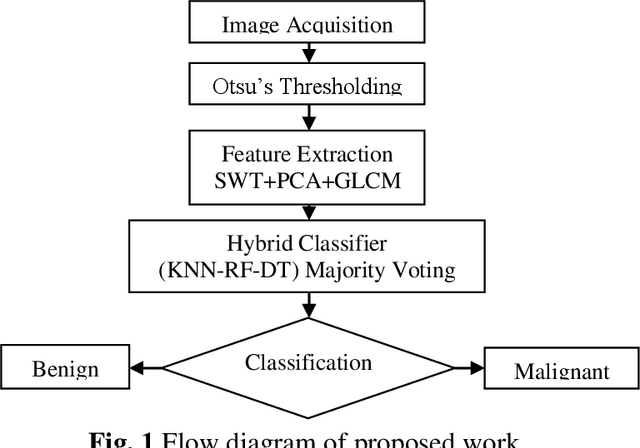

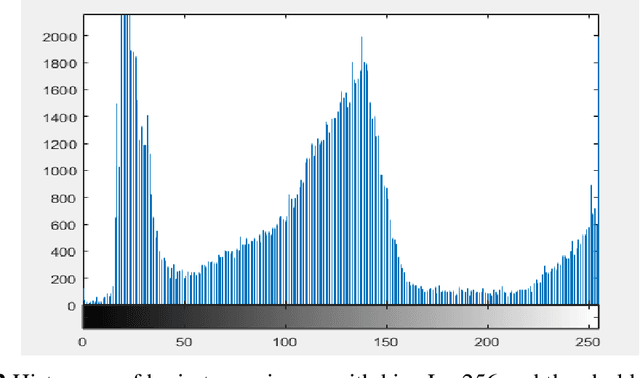

Abstract:To improve patient survival and treatment outcomes, early diagnosis of brain tumors is an essential task. It is a difficult task to evaluate the magnetic resonance imaging (MRI) images manually. Thus, there is a need for digital methods for tumor diagnosis with better accuracy. However, it is still a very challenging task in assessing their shape, volume, boundaries, tumor detection, size, segmentation, and classification. In this proposed work, we propose a hybrid ensemble method using Random Forest (RF), K-Nearest Neighbour, and Decision Tree (DT) (KNN-RF-DT) based on Majority Voting Method. It aims to calculate the area of the tumor region and classify brain tumors as benign and malignant. In the beginning, segmentation is done by using Otsu's Threshold method. Feature Extraction is done by using Stationary Wavelet Transform (SWT), Principle Component Analysis (PCA), and Gray Level Co-occurrence Matrix (GLCM), which gives thirteen features for classification. The classification is done by hybrid ensemble classifier (KNN-RF-DT) based on the Majority Voting method. Overall it aimed at improving the performance by traditional classifiers instead of going to deep learning. Traditional classifiers have an advantage over deep learning algorithms because they require small datasets for training and have low computational time complexity, low cost to the users, and can be easily adopted by less skilled people. Overall, our proposed method is tested upon dataset of 2556 images, which are used in 85:15 for training and testing respectively and gives good accuracy of 97.305%.
A Hybrid MLP-SVM Model for Classification using Spatial-Spectral Features on Hyper-Spectral Images
Jan 01, 2021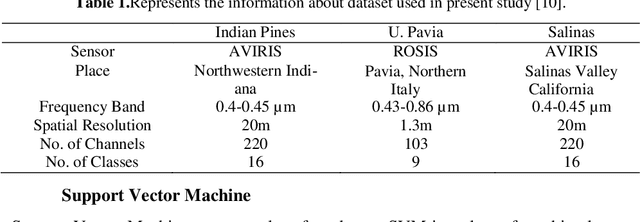
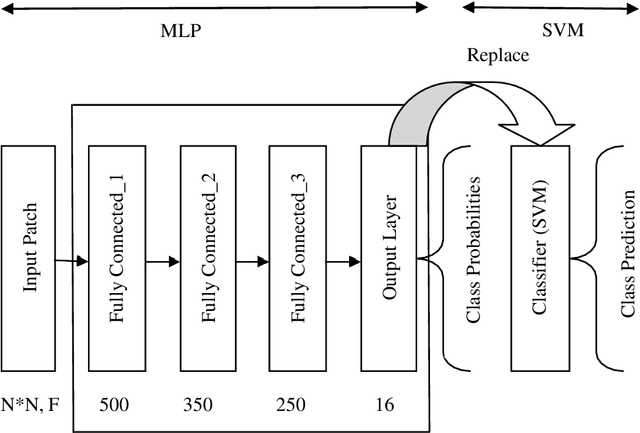

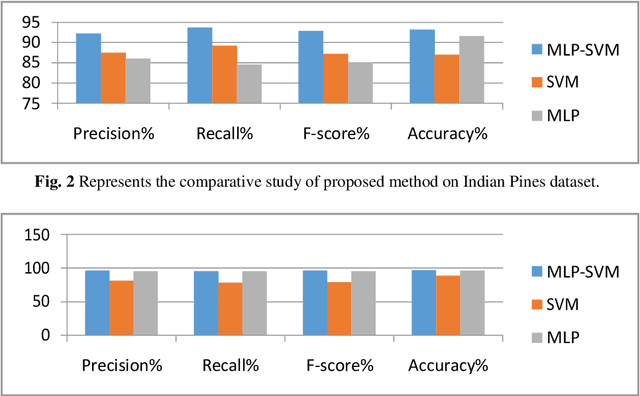
Abstract:There are many challenges in the classification of hyper spectral images such as large dimensionality, scarcity of labeled data and spatial variability of spectral signatures. In this proposed method, we make a hybrid classifier (MLP-SVM) using multilayer perceptron (MLP) and support vector machine (SVM) which aimed to improve the various classification parameters such as accuracy, precision, recall, f-score and to predict the region without ground truth. In proposed method, outputs from the last hidden layer of the neural net-ork become the input to the SVM, which finally classifies into various desired classes. In the present study, we worked on Indian Pines, U. Pavia and Salinas dataset with 16, 9, 16 classes and 200, 103 and 204 reflectance bands respectively, which is provided by AVIRIS and ROSIS sensor of NASA Jet propulsion laboratory. The proposed method significantly increases the accuracy on testing dataset to 93.22%, 96.87%, 93.81% as compare to 86.97%, 88.58%, 88.85% and 91.61%, 96.20%, 90.68% based on individual classifiers SVM and MLP on Indian Pines, U. Pavia and Salinas datasets respectively.
Multi-level Attention network using text, audio and video for Depression Prediction
Sep 03, 2019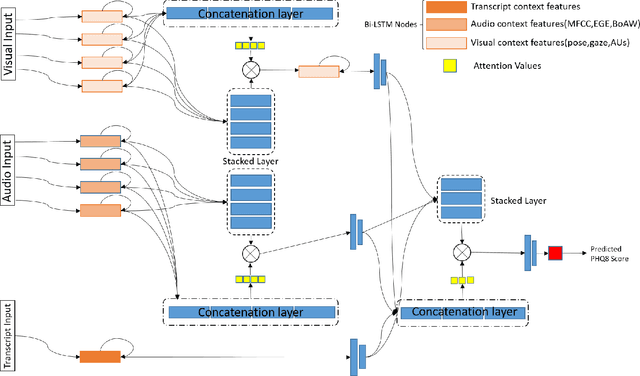


Abstract:Depression has been the leading cause of mental-health illness worldwide. Major depressive disorder (MDD), is a common mental health disorder that affects both psychologically as well as physically which could lead to loss of lives. Due to the lack of diagnostic tests and subjectivity involved in detecting depression, there is a growing interest in using behavioural cues to automate depression diagnosis and stage prediction. The absence of labelled behavioural datasets for such problems and the huge amount of variations possible in behaviour makes the problem more challenging. This paper presents a novel multi-level attention based network for multi-modal depression prediction that fuses features from audio, video and text modalities while learning the intra and inter modality relevance. The multi-level attention reinforces overall learning by selecting the most influential features within each modality for the decision making. We perform exhaustive experimentation to create different regression models for audio, video and text modalities. Several fusions models with different configurations are constructed to understand the impact of each feature and modality. We outperform the current baseline by 17.52% in terms of root mean squared error.
 Add to Chrome
Add to Chrome Add to Firefox
Add to Firefox Add to Edge
Add to Edge